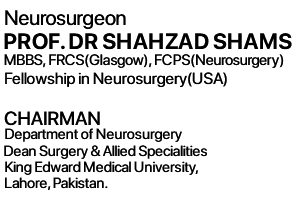Understanding the Signs and Seeking Help
Our spine is a remarkable structure, providing support and flexibility to our body. However, it is also susceptible to various injuries that can have serious consequences if left untreated. Recognizing the symptoms of spine injuries is crucial for early intervention and effective treatment. In this informative article, we will delve deep into the world of spine injuries, exploring 25 detailed aspects to help you better understand the signs and symptoms associated with them.
When it comes to our health, there are few things as important as the well-being of our spine. The spine, a complex structure of bones, nerves, and soft tissues, plays a pivotal role in our ability to move, stand, and even breathe. However, it is also vulnerable to various injuries, which can have severe consequences if left untreated. Recognizing the symptoms of spine injuries is crucial for early intervention and effective treatment. In this article, we will explore these symptoms comprehensively, helping you understand when to seek medical assistance.
Understanding the Symptoms of Spine Injuries
1. Persistent Back Pain: One of the most common symptoms of spine injuries is persistent back pain. This pain can range from a dull ache to sharp, shooting pains. It might be localized or radiate to other areas of your body.
2. Neck Pain: Persistent discomfort in your neck can be a sign of cervical spine injuries. If you experience this, it’s essential to investigate the cause.
3. Numbness or Tingling: Sensations of numbness or tingling, often referred to as paresthesia, can indicate nerve compression due to a spine injury.
4. Muscle Weakness: Weakness in the muscles, particularly in the limbs, can be a sign of spinal cord damage. Seek medical attention promptly if you notice a sudden loss of strength.
5. Loss of Coordination: Difficulty in coordinating movements, such as stumbling or dropping objects, can be attributed to spine injuries affecting motor functions.
6. Changes in Bowel or Bladder Function: Loss of control over bowel or bladder functions is a red flag and requires immediate medical assessment, as it can indicate severe spinal cord injury.
7. Radiating Pain: Pain that travels down your arms or legs, often following the path of a specific nerve, can indicate nerve compression or irritation due to spine issues.
8. Difficulty Breathing: Injuries in the upper spine can affect the nerves controlling the diaphragm, leading to breathing difficulties. This is a medical emergency and needs urgent attention.
9. Visible Deformity: In severe spine injuries, you might notice a visible deformity in the spine’s alignment. This is especially common in cases of traumatic injury.
10. Pain with Movement: Pain that worsens with certain movements or positions can be indicative of a spine injury. Pay attention to whether rest or specific positions alleviate or exacerbate the pain.
11. Headaches: Injuries to the cervical spine can sometimes lead to chronic headaches, particularly at the base of the skull.
12. Difficulty Sleeping: Discomfort and pain from spine injuries can make it challenging to get a good night’s sleep. Chronic sleep disturbances may be a sign of an underlying issue.
13. Sensory Changes: Changes in sensory perception, such as heightened sensitivity or reduced sensitivity to touch, can be associated with spine injuries.
14. Difficulty Walking: Spine injuries can affect your ability to walk normally. This might manifest as stumbling, dragging your feet, or an altered gait.
15. Loss of Bladder or Bowel Control: In severe cases, a spine injury can lead to complete loss of bladder and bowel control. This is a medical emergency.
16. Fatigue: Ongoing fatigue that doesn’t improve with rest can be related to chronic pain and discomfort resulting from spine injuries.
17. Fever: Infections related to spine injuries can cause fever. If you experience unexplained fever along with back or neck pain, consult a healthcare professional.
18. Scoliosis: Abnormal curvature of the spine, known as scoliosis, can sometimes be a symptom of an underlying spine condition.
19. Difficulty Swallowing: Spine injuries in the cervical region can impede the normal swallowing process, leading to difficulty in swallowing food or liquids.
20. Muscle Spasms: Painful muscle spasms in the back or neck can occur as a result of spine injuries.
21. Pain in the Buttocks or Legs: Pain in the buttocks or legs, often referred to as sciatica, can be caused by spinal issues like herniated discs or spinal stenosis.
22. Loss of Sensation: Complete or partial loss of sensation in specific areas of the body can be linked to spine injuries affecting nerve function.
23. Vertigo: Dizziness and a spinning sensation, known as vertigo, can sometimes be related to spine injuries affecting the cervical spine.
24. Changes in Reflexes: Alterations in reflex responses, such as diminished or hyperactive reflexes, can be indicative of spinal cord issues.
25. Depression and Anxiety: Living with chronic pain and disability due to spine injuries can lead to psychological challenges like depression and anxiety.
FAQs
What should I do if I suspect I have a spine injury?
If you suspect you have a spine injury, it’s crucial to seek medical attention immediately. Avoid any strenuous activities or movements that could worsen the injury until you’ve been evaluated by a healthcare professional.
Are all spine injuries painful?
Not all spine injuries cause pain. Some injuries, especially in the early stages, might not present with noticeable pain but can still have serious consequences. It’s essential to be aware of other symptoms like numbness, weakness, or changes in sensation.
Can spine injuries heal on their own?
Some minor spine injuries might improve with rest and conservative treatments, while others require medical intervention. It’s essential to consult a healthcare provider for a proper diagnosis and treatment plan.
How are spine injuries diagnosed?
Spine injuries are typically diagnosed through a combination of physical examinations, medical history assessments, imaging studies like X-rays or MRI scans, and, in some cases, specialized tests like electromyography (EMG).
What is the most common cause of spine injuries?
Trauma, such as car accidents and falls, is a common cause of spine injuries. However, they can also result from degenerative conditions, tumors, infections, or congenital abnormalities.
Can spine injuries lead to paralysis?
Yes, severe spine injuries, especially those affecting the spinal cord, can lead to paralysis. The extent of paralysis depends on the level and severity of the injury.
Conclusion
Understanding the symptoms of spine injuries is crucial for early detection and prompt treatment. If you experience any of the signs mentioned in this comprehensive guide, do not hesitate to consult a doctor. Timely intervention can make a significant difference in your recovery and overall well-being.
Remember, your spine is a vital part of your body, and its health should never be taken lightly. By staying informed about spine injuries and their symptoms, you can take proactive steps to protect your spine and overall health.






